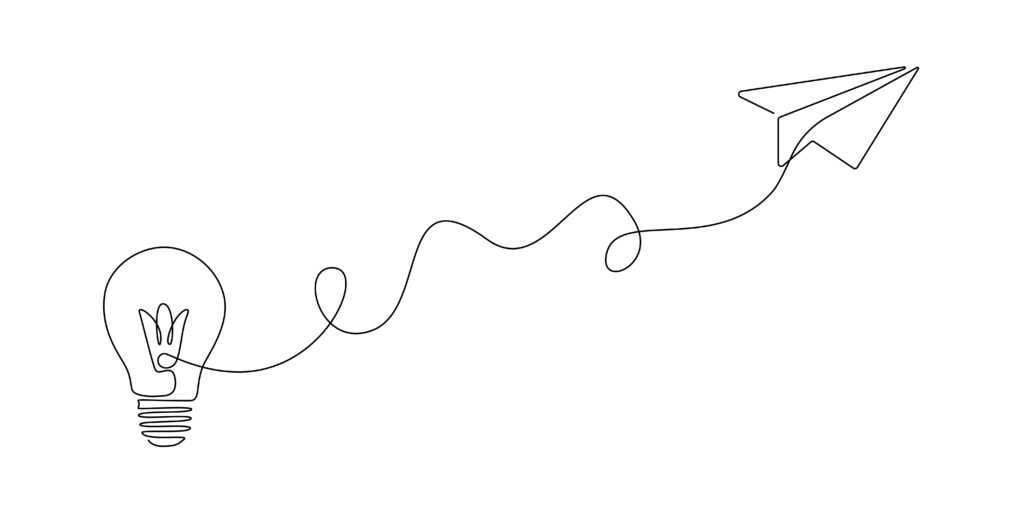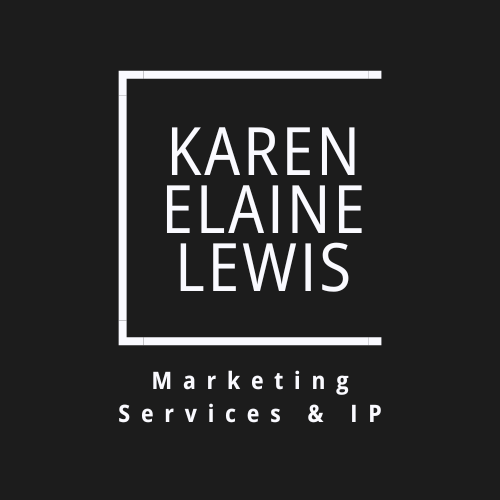In the digital marketplace, the path from stranger to client rarely happens in a single interaction. Today’s sophisticated buyers move through distinct stages of awareness, consideration, and decision-making, a journey that can take days, weeks, or even months. What guides them along this path? Strategic content designed to answer their evolving questions, address emerging concerns, and build progressive trust.
This is the essence of content flow: the deliberate sequencing of valuable information that moves prospects from initial curiosity to informed decision. When done well, it creates a frictionless pathway to conversion that feels helpful rather than pushy, guiding prospects through what marketers often call the funnel: from top of funnel or “TOFU” (early awareness), through middle of funnel or “MOFU” (active consideration), to bottom of funnel or “BOFU” (decision-making).
Why traditional marketing approaches fall short
Many businesses still approach marketing with a binary mindset: prospects are either ready to buy or they’re not. This perspective leads to websites and campaigns dominated by either awareness-focused brand messaging or aggressive sales content, with little in between.
The result? Prospects who need more information before making decisions feel pressured, while those who are nearly ready to buy lack the specific details they need to move forward. Both groups typically leave without converting.
Understanding the modern customer journey
Today’s buying journey typically involves several distinct phases that marketing professionals often organize using what’s called a “marketing funnel” with three main sections: the top of funnel (TOFU), middle of funnel (MOFU), and bottom of funnel (BOFU).
At the TOFU stage, prospects first become aware they have a challenge or opportunity but may not be actively seeking solutions yet. This is the awareness phase. The journey then progresses to problem definition as they begin researching to better understand their situation and potential approaches to addressing it.
Moving into the MOFU stage, prospects enter a more active consideration phase. They begin solution exploration, investigating specific options and providers who might help. This leads to evaluation and comparison, where they assess different possibilities against their criteria, often comparing several potential providers.
In the BOFU stage, buyers are getting close to a decision. They seek justification and risk reduction, looking for validation and reassurance that they’re making the right choice. Only then do they reach the purchase decision, selecting their preferred option and completing the transaction. The journey continues beyond the funnel with the post-purchase experience as they assess whether the solution meets expectations and determine their satisfaction level.
Effective content flow addresses the specific information needs at each of these stages, creating a logical progression from awareness to action.
The business impact of strategic content flow
Organizations that implement sophisticated content journeys consistently outperform competitors. They experience shorter sales cycles as prospects move more efficiently through decision stages. Their conversion rates improve at each step of the journey, and they often see larger average transaction values due to better solution understanding.
These businesses typically enjoy reduced cost per acquisition through more efficient lead nurturing. Customer satisfaction improves from better expectations alignment, and higher retention rates result from appropriate customer selection. These advantages compound over time, creating sustainable competitive differentiation that’s difficult for competitors to replicate.
Essential content types for each journey stage
Different stages of the customer journey require distinct content formats and approaches to effectively engage prospects where they are in their decision process.
Awareness stage content (TOFU content)
At the top of the funnel, often abbreviated as “TOFU” by marketers, educational blog articles addressing broad industry challenges help prospects recognize that their problems are worth solving. Thought leadership content demonstrates your expertise without pushing solutions, while social media posts highlighting relatable pain points create initial connection. SEO-optimized content answering preliminary questions ensures you’re found when prospects begin searching.
As prospects seek to better understand their situation, diagnostic tools can help clarify specific challenges they face. Research reports provide context and benchmarks that help them assess the severity of their situation. Explanatory guides define problems and implications in greater depth, while industry trend analyses show evolving landscapes that might impact their decisions.
Consideration stage content (MOFU content)
When prospects reach the middle of the funnel (or “MOFU”), they begin looking for solutions. Approach comparisons outlining different methodologies help them understand available options. Case studies demonstrating real-world applications show how others have addressed similar challenges. Methodology explanations detail your unique process, and “how it works” content provides process transparency that builds confidence.
As decision-making intensifies, detailed service or product descriptions with specifications help prospects assess fit for their needs. Competitive differentiation content highlights your unique value, while ROI calculators quantify potential outcomes. Testimonials and reviews from similar clients provide social proof that reduces perceived risk.
Decision stage content (BOFU content)
At the bottom of the funnel (commonly called “BOFU” in marketing circles), implementation guides showing what happens after purchase help prospects envision success. Guarantees and assurances address common concerns that might prevent action. Technical documentation supports stakeholder review in complex sales, and FAQ content answers pre-purchase questions that might otherwise create friction.
When prospects are ready to buy, clear pricing and packaging information removes uncertainty. Onboarding previews showing initial experiences set appropriate expectations. Contract and terms explanations reduce legal anxiety, and “next steps” guides simplify the path to becoming a customer.
Post-purchase content
Beyond the traditional marketing funnel, post-purchase materials ensure successful implementation and early wins. Knowledge base resources support ongoing use and maximize value. Success milestone content celebrates progress, reinforcing the decision to work with you. Expansion opportunity resources highlight growth paths when customers are ready for more, potentially bringing them back into the funnel for additional solutions.
The art and science of content flow
Creating effective content journeys involves both structured strategy and human psychology. Strategic mapping deliberately sequences content based on logical information needs as prospects move from the awareness stage (top of funnel) through consideration (middle of funnel) to decision (bottom of funnel). Progressive disclosure reveals information at appropriate times rather than overwhelming with everything at once.
Psychological triggers incorporate motivational elements that encourage continued momentum through the journey. Cognitive ease structures information to minimize mental effort required for comprehension, making it simpler to advance. Pattern recognition creates consistent formats that build familiarity and comfort as prospects engage with multiple content pieces.
Value reinforcement continuously demonstrates worth through each content interaction, building a compelling case for eventual conversion. The most effective content flows balance these elements, creating experiences that feel simultaneously helpful, engaging, and purposeful at every stage of the customer journey.
Common content flow mistakes to avoid
Even businesses that recognize the importance of content journeys often make critical mistakes that undermine their effectiveness. Content gaps between stages leave missing crucial information that bridges decision phases, causing prospects to get stuck or abandon the journey. One-size-fits-all approaches fail to account for different buyer personas and their unique information needs at each stage of awareness, consideration, and decision-making (what marketers call the top, middle, and bottom of the funnel).
Inconsistent messaging across touchpoints creates dissonance when prospects encounter contradictory or disconnected information across channels. Weak transitions between pieces fail to include clear next steps or natural progressions from one content asset to another. Overwhelming with options provides too many content choices without clear guidance on what to consume next as prospects move deeper into their decision journey.
Static content that doesn’t adapt fails to adjust content recommendations based on prospect behavior and engagement signals. Perhaps most damaging are premature conversion attempts that push prospects from early awareness directly to purchase decisions before providing sufficient value and building adequate trust through consideration-stage content.
Building your content journey map
Creating effective content flows begins with systematic planning that aligns with your prospects’ decision journey. Start by defining your ideal client personas, identifying distinct audience segments with different needs, motivations, and information preferences at each stage. Then map their decision journeys by documenting the questions, concerns, and considerations as they progress from initial awareness (top of funnel) to active consideration (middle of funnel) to final decision-making (bottom of funnel).
An audit of existing content helps catalog available assets and identify gaps in your current content ecosystem across the customer journey. This allows you to prioritize content development, focusing first on high-impact gaps that address critical decision points. Creating content connectors develops transitional elements that guide prospects from one piece to the next, maintaining momentum through each stage.
Implementing progressive profiling allows you to gather incremental information to personalize the journey as prospects engage. Finally, establishing measurement frameworks defines metrics to evaluate content effectiveness at moving prospects through each stage of their buying journey, enabling continuous improvement.
Practical examples: see how it works
For practical examples of how this works in different contexts, we’ve created sample content journey maps for two business types:
And to help you get started creating your own content map, download our:

From strategy to implementation
Translating content journey maps into functioning systems involves several key components that work together to create seamless experiences. Technology infrastructure including CRM, marketing automation, and content management systems support progressive engagement as prospects move from awareness to consideration to decision. Content production processes provide frameworks for efficiently creating and updating journey-appropriate content at each stage.
Distribution mechanisms deliver the right content to the right prospects at the right times, using both automation and human touchpoints appropriate to where customers are in their journey. Personalization capabilities adapt content recommendations based on engagement and behavior, creating increasingly relevant experiences as prospects progress closer to decisions. Measurement and optimization tools track journey effectiveness and identify improvement opportunities, supporting data-driven refinement across all stages of the customer experience.
The future of content journeys
As technology and buyer expectations evolve, several trends are reshaping content flow strategies in ways that create both opportunities and challenges. AI-driven personalization dynamically adjusts content paths based on behavior patterns, creating increasingly individualized experiences throughout the customer journey. Interactive content adapts based on real-time engagement, allowing prospects to self-direct their exploration within structured frameworks at each stage of their decision process.
Conversational interfaces guide prospects through information discovery in more natural ways, while cross-channel journey continuity maintains progress across devices and platforms, acknowledging the non-linear nature of modern buying journeys. Predictive content recommendations anticipate next questions and needs, creating more intuitive progression through complex decisions at each stage from awareness to consideration to purchase.
In today’s information-rich environment, simply creating good content isn’t enough. Strategic sequencing, thoughtful connections, and deliberate pathways transform isolated content pieces into powerful conversion engines that guide prospects through each stage of their decision journey. By mapping content to the awareness, consideration, and decision phases your prospects experience (what marketers call the top, middle, and bottom of the funnel), you create journeys that feel less like marketing and more like valuable guidance, the foundation of sustainable growth in contemporary markets.

